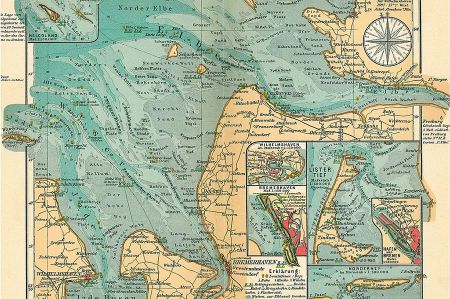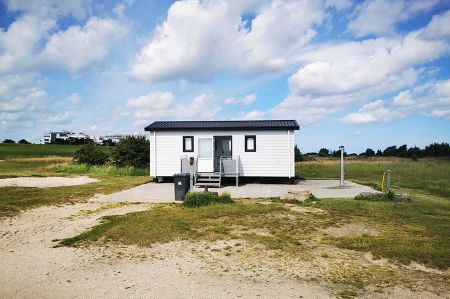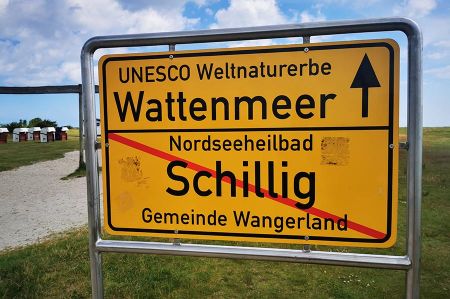2. Mudflat hike to the Minsener Oog bird sanctuary
- Written by Portal Editor
A few years ago, we had already searched for a path through the Wadden Sea to visit the Minsener Oog bird sanctuary. At the time we were with some friends from the south of Germany who wanted to get to know the mudflats for the first time and thus the healthy effect of the mud and the fresh sea breeze (click here for the article from that time).
Our guide at the time was available again and first explained to us that the official name is Minsener Oog because it is derived from the mainland town of Minsen opposite. There is a legend that the town of Minsen used to be on the island of Minsener Oog. The local fishermen are said to have caught a mermaid who, out of revenge, caused the village to sink into the flood. Based on this legend, there is the bronze sculpture of the Minsener Seewiefken in Minsen, which is also the coat of arms figure of the Wangerland municipality.
The legend of the Minsener Seewiefken

At some point the mermaid managed to escape the clutches of her tormentors. She quickly ran towards the water, where she turned around once again and splashed some seawater over the dike with her hands.

A bronze sculpture is dedicated to this story, which is set up in the Norderaltendeich district near the dyke. The sculptor and painter Karin Mennen from neighbouring Horum created the larger-than-life figure of a mermaid in 1992. Worth a visit, too.
The starting point is once again the beach at Schillig
Today we are far removed from the myths of the past and know that the island of Minsener Oog is man-made and built on two sandbanks. It was created at the beginning of the 20th century from the sandbanks of Minsener Oog and the Olde Oog, which is located 200 to 300 meters south of it, or the sandbank of Steenplate, to protect the shipping lane to the ports of Wilhelmshaven and Bremerhaven. As early as 1906, the Wilhelmshaven Naval Construction Directorate built groynes and dams on Olde Oog to prevent the Jadestrom shipping lane from silting up.
The original plan was to connect Wangerooge with the Minsener Olde Oog so that Wangerooge's land erosion could come to an end. This project was temporarily resumed in the 1930s, but the war prevented further work of this kind.
Bird sanctuary and tourist attraction
Since the beacon was automated, a bird watcher appointed by the Mellumrat e. V. only lives on the Minsener Oog in the summer months during the breeding season, sharing the residential barracks of the Water and Shipping Authority. The island is also considered one of the most important research areas for the Institute for Bird Research.
In the summer months, mudflat hikes are offered from Schillig on the mainland to the island. However, for nature conservation reasons, only a small part of the island may be entered. The entire island belongs to Quiet Zone I of the Lower Saxony Wadden Sea National Park.
Based on the knowledge of our mudflat guide, we decided to cross the path through the Pril further west, which we managed. Even the Pricken Weg/small channel was less deep and could then be crossed easily. Due to the tides, you can only stay on Minsener Oog for a few minutes, because the flood water returns quickly and the tidal channels become deep watercourses, sometimes with strong currents.
Please read as well:
Cycle tour to the Burgaltendorf castle ruins from Essen-Horst
Coastal sea rescue - 150 years service to shipwrecked people
